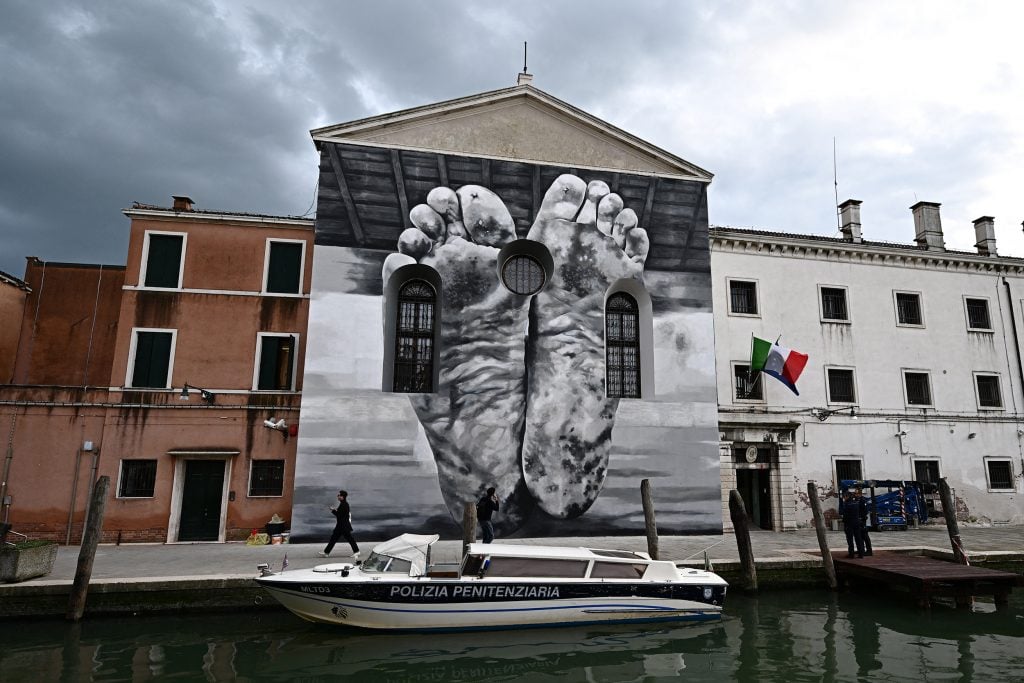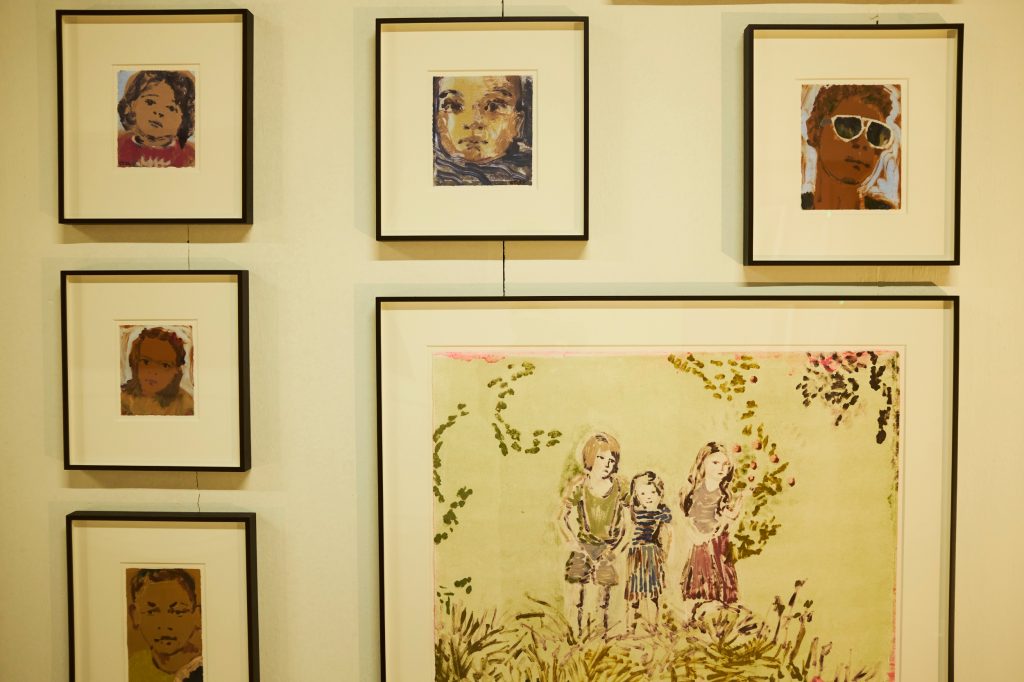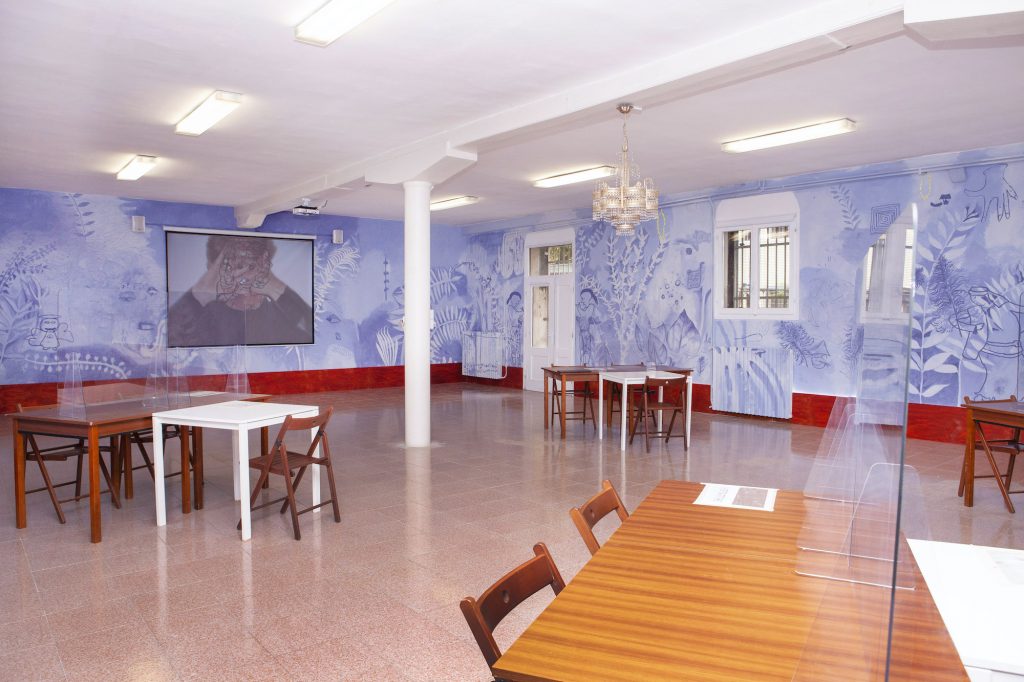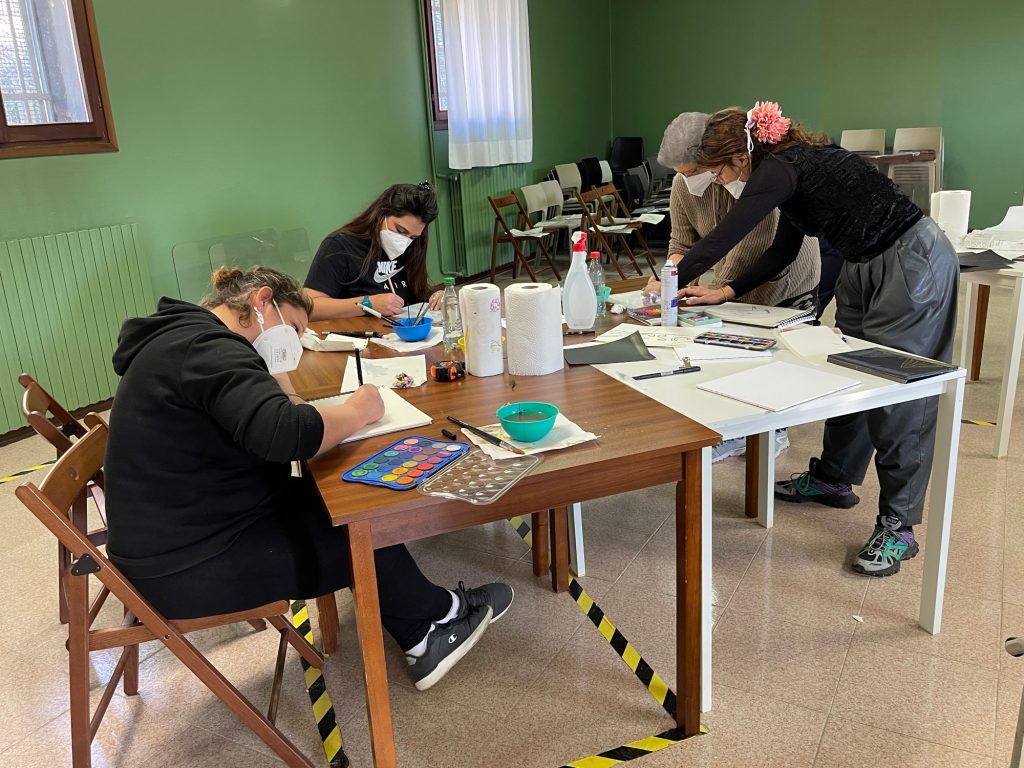Art World
Italian Curators Claim Vatican’s Venice Biennale Pavilion Exploits Prisoners
Organizers of the Holy See's exhibition say it has potential benefits for 'resocializing purposes.'

Organizers of the Holy See's exhibition say it has potential benefits for 'resocializing purposes.'

Jo Lawson-Tancred

The Vatican’s Holy See Pavilion at this year’s 60th Venice Biennale, which is installed in a women’s prison on the island of Giudecca, has come under fire from two curators of an earlier art installation at the same penitentiary in 2022. The duo, known as Francesco Urbano Ragazzi, said they are concerned the Vatican’s show, “With My Eyes,” encourages voyeurism and the exploitation of the jail’s residents. They cite a lack of artistic collaboration with the prisoners and concerns over uncompensated labor. The pavilion’s organizers said the curators’ claims are unfounded.
“We are aware of the conditions in Italian prisons: just think that in our country, in 2023, more than 70 inmates took their own lives,” Francesco Urbano Ragazzi said in a joint statement shared via email. “For this reason, we cannot accept that such an operation is communicated as a collaborative project for the benefit of the prison population. From the information reported to us and circulating in the media, here it seems instead that the prison is only used as a backdrop, or worse as a façade of big powers simulating social involvement.”
Central to their claims is the assertion that most of the show‘s participating artists did not meaningfully collaborate with the incarcerated women despite the fact that the exhibition is billed as a co-operative effort. They claim that French artist Claire Tabouret, for example, made portraits of the women’s children based on photographs she was sent without meeting the families in question. Prisoners who contributed poems for Simone Fattal’s work were allegedly given no explicit guidance from the artist herself nor were they paid for their work.
Francesco Urbano Ragazzi further questioned whether the prisoners could really benefit from a show that has works, like Maurizio Cattelan’s mural, that sit outside the prison walls. All works will be dismantled when the Biennale ends in November.

Installation of portraits by Claire Tabouret in “With My Eyes” exhibition at the Holy See Pavilion at the 60th Venice Biennale in 2024. Photo: Marco Cremascoli.
The Vatican exhibition organizers pushed back on the perception that inmates did not have an opportunity to participate in the artists’ projects. In an emailed response, they noted that an initial workshop was held by the collective Claire Fontaine for the first weekend of May and said that there will be more. Other opportunities for participation will include contributing to a special issue of the Vatican’s monthly paper L’Osservatore di Strada, edited by Maurizio Cattelan, and involvement in a piece of choreography created by the French dancer Bintou Dembélé.
Additionally, they said that curators acted as intermediaries for the projects by Fattal and Tabouret but clarified that all the participating artists met the inmates at some point, including Sonia Gomes who traveled from Brazil and “deeply opened up to them through a very emotional encounter.”
The organizers also noted that participation was voluntary and conducted in compliance with the Prison Ordinance, which encourages the prisoners’ participation “as part of an individual training and redemption program.” As such, they argued, the exhibition has potential benefits for “resocializing purposes” that may help the incarcerated women reintegrate into society.
“Pope Francis deeply endorsed the Pavilion project because it raises attention to the conditions in penitentiaries,” the Holy See pavilion organizers said in a statement responding to Francesco Urbano Ragazzi’s claims, adding that the Pope visited the Holy See Pavilion on April 28, meeting with the inmates and offering them words of encouragement. “[The meeting conveys] a gesture of respect, dignity, and attention for their condition that highlights the importance of the construction of one’s own future during the penitentiary life. The Pavilion project is part of this perspective, specifically through art.”

Pauline Curnier Jardin, Adoration installed at Casa Reclusione Femminile womens’ prison on Giudecca in Venice, Italy. Photo courtesy Francesco Urbano Ragazzi.
Francesco Urbano Ragazzi also raised concerns about the uncompensated labor inmates have taken on for the purposes of the Holy See’s Biennale exhibition. Those who starred in a film by Italian artist Marco Perego were allegedly unpaid. Other prisoners have opted to volunteer to work as exhibition guides for tours that happen approximately four times each day. These tours last about an hour and are led by two guides, who have been given training from the curators, production team, and the prison’s educational team.
“Their presence in the tours is managed by the prison according to their needs, their desires and other activities they have or want to do,” a spokesperson for the Holy See pavilion said. “They are absolutely free whether to attend this activity or any other activity proposed by the Pavilion—as it happens for every cultural, recreational, educational activity that every prison provides to their inmates.”
For their own 2022 project, produced by LIAF Biennial, Francesco Urbano Ragazzi said inmates were also not financially compensated for their involvement. The collective commissioned French artist Pauline Curnier Jardin to hold optional educational workshops, inviting the inmates to share ideas and designs for a mural in the prison’s parlor. They noted that their workshop was structured as a participatory activity and did not have any characteristics of labor, such as work shifts or mandatory tasks. The project’s aim was “to establish a new bond between art and real life,” they said, adding that they “aimed to reverse the usual hierarchies of the institution and focus on the needs or desires of the people living inside the prison.”
The curators asked that the site of the artwork, where inmates meet outside visitors, be renovated and the necessary physical labor was completed by the artist with external help. Curnier Jardin also permanently installed Adoration, a video that was co-written with the inmates and featured their drawings. While the inmates were not financially compensated for their contributions, Curnier Jardin’s mural and video installation were donated to the prison.
“It was crucial to involve [the inmates] in the decisional process regarding every single step of the artwork: from its commission, to the production, to the opening reception,” Curnier Jardin said. “This was possible thanks to the expert mediation of Rio Terà dei Pensieri social cooperative, to the openess of the former director of the Casa di Reclusione and all the police officers. I hope that the Vatican project could count on the same attitude, methodology, and collaborative network.”

The making of Pauline Curnier Jardin’s Adoration (2022) at Casa Reclusione Femminile womens’ prison on Giudecca in Venice, Italy. Photo courtesy Francesco Urbano Ragazzi.
After the show was inaugurated during the LIAF Biennale’s vernissage week in April 2022, with some 600 attendees overall, the show was closed to the public. The curators say this decision was made “to counteract the sometimes exploitative rhythm the Biennale imposes on the city” and “to avoid a voyeuristic attitude towards this institution and the people forced to live there.”
Francesco Urbano Ragazzi also suggested that the Vatican appropriated Curnier Jardin’s installation without prior consent. When the Giudecca prison was chosen as the location for the Vatican’s pavilion, one of the exhibition’s curators, Chiara Parisi, allegedly contacted Curnier Jardin on March 4 informing her that the equipment given to the prison for her video installation would be used to screen another film instead. The artist told Artnet News she chose not to respond immediately.
Yet both the artist and curators said they were later angered to find that images of Adoration had been shared as part of the pavilion’s press kit and published in publications like Artribune and Elle without her consent. At this point, Francesco Urbano Ragazzi stepped in to tell the pavilion and the prison director that they did not want their project to be associated with the exhibition “With My Eyes.” They said they regret being “forcibly associated with a delicate ethical and religious operation without our beliefs being respected.”
According to the Holy See exhibition organizers, an early version of the press kit included an image of the parlor, which then included Curnier Jardin’s work, solely as “a contextual iconographic element as the room is walked through by visitors to access other rooms in the Pavilion.”